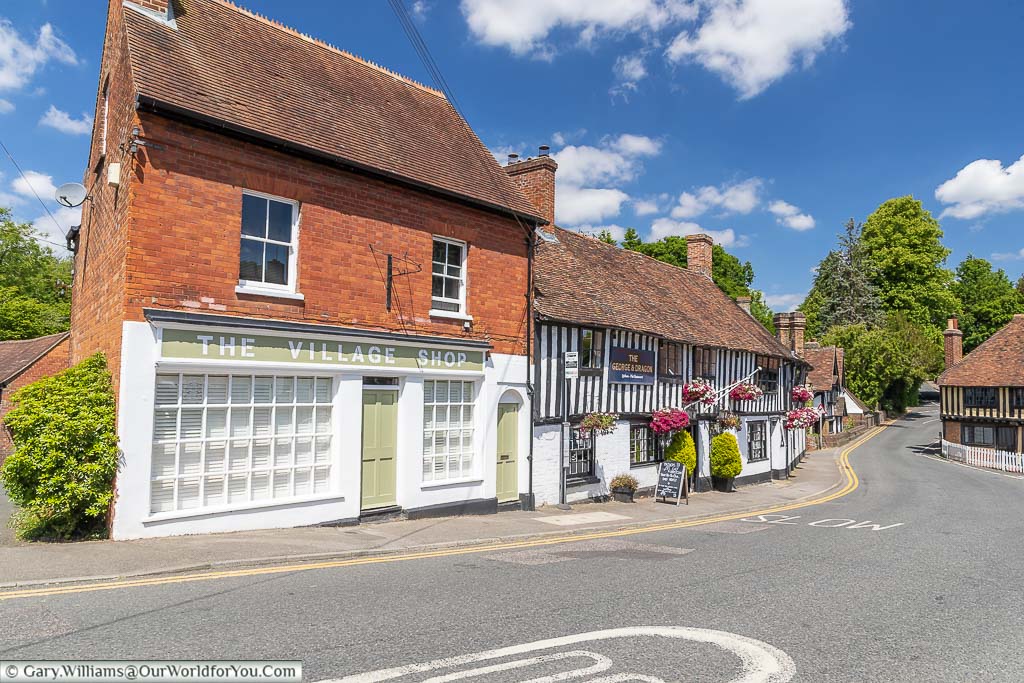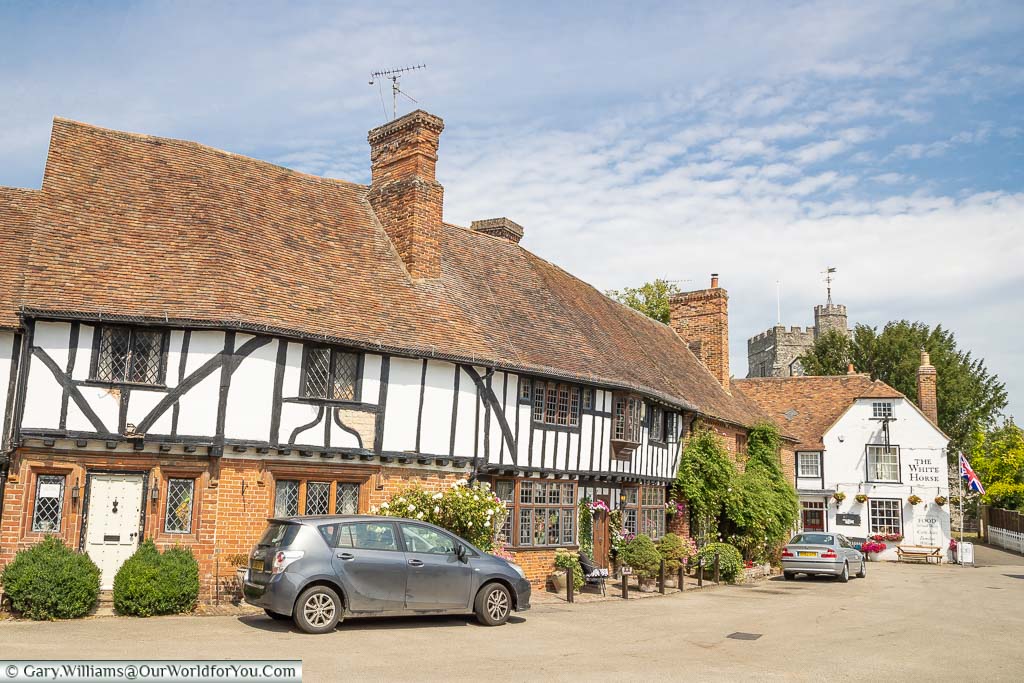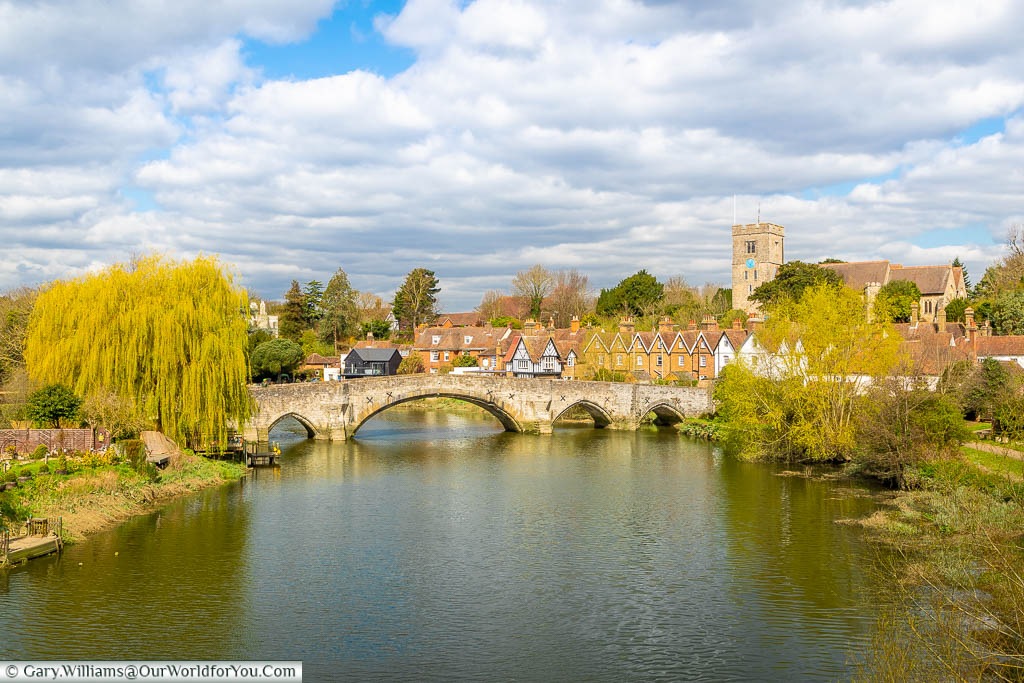Remembering the sacrifices made for future generations
Chatham has played a significant role within Royal Naval history for hundreds of years. Chatham’s historic dockyard was once a bustling hive of activity with dockers, shipbuilders, labourers and seamen all with the purpose of protecting ‘King and Country’.
Over the centuries, Chatham Dockyard has built and launched a vast number of British warships. Every metal rivet, each length of oak decking and the miles and miles of rope rigging would have passed through unwavering hands.
The vessels would range from the commanding power and elegance of Horatio Nelson’s H.M.S. Victory to the streamline submarine of H.M.S. Ocelot.
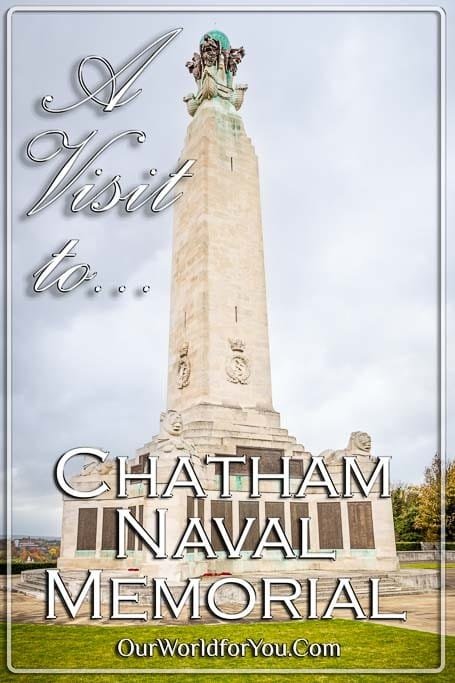
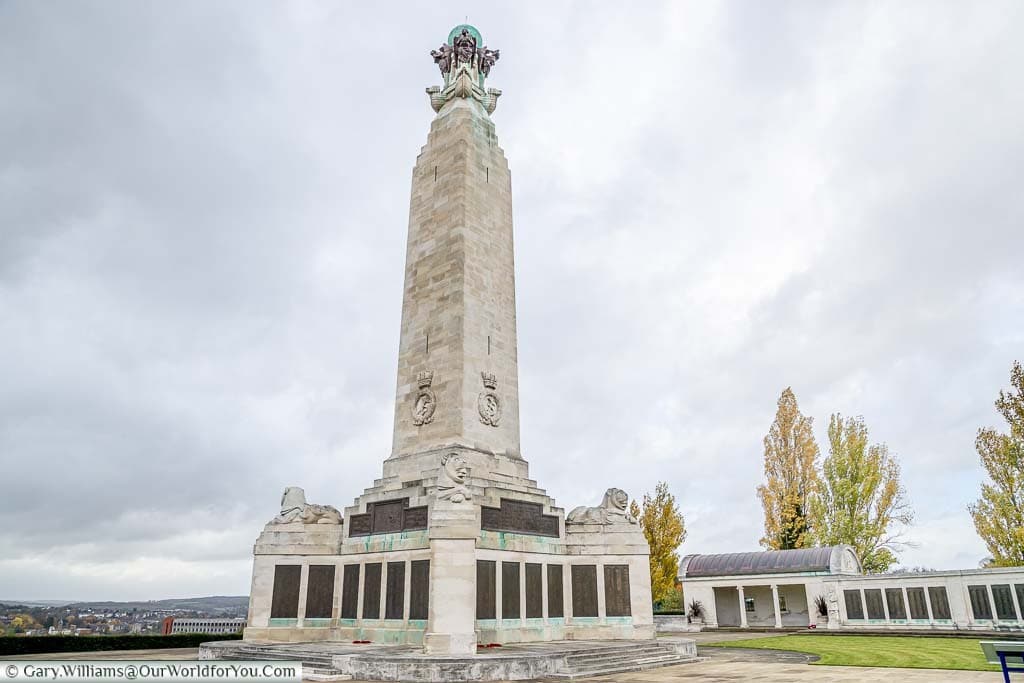
Where is Chatham Naval Memorial?
How to get to Chatham Naval Memorial?
- By Train
You can catch a high-speed train from London St Pancras direct to Chatham Station, which takes 40mins. Then it’s either a short taxi ride or around a 20-minute walk.
- By Car
Chatham Naval Memorial is around 8 miles (12.8km) off Junction 1 of the M2 motorway. Parking: Car park near the memorial. Set your Sat Nav for King's Bastion (it's a road) and drive to the end.
Three Naval Memorials
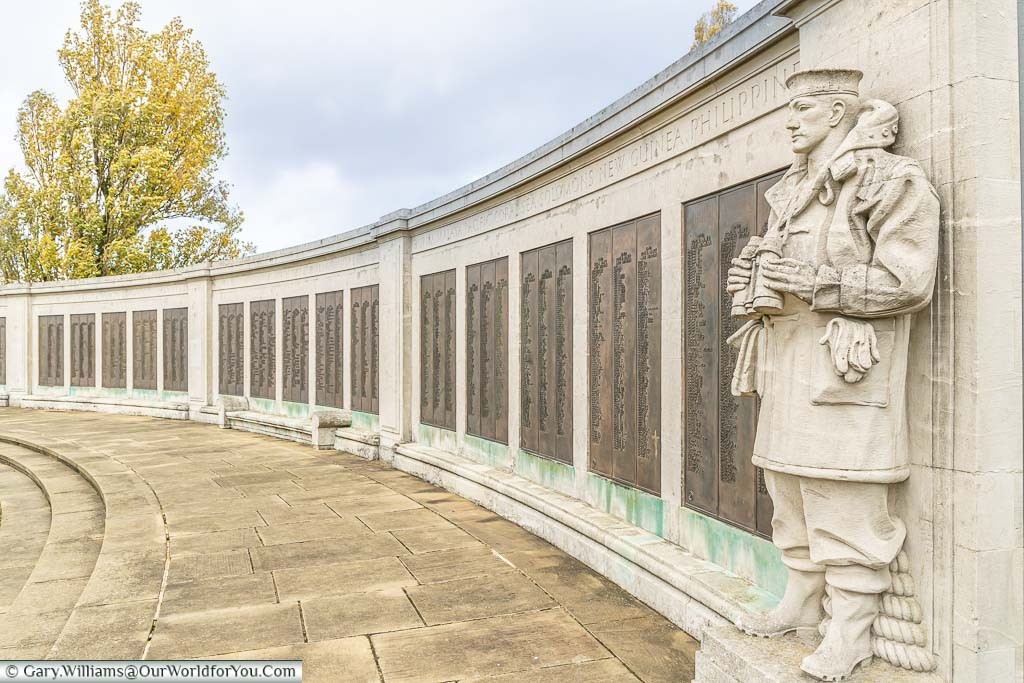
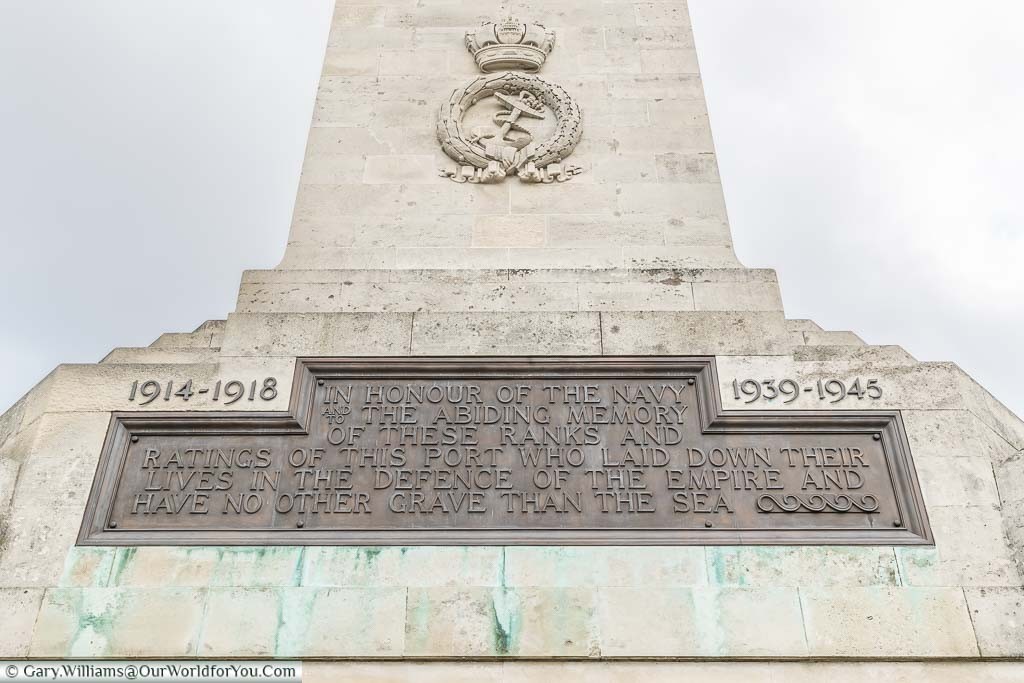
Chatham’s First World War Naval Memorial
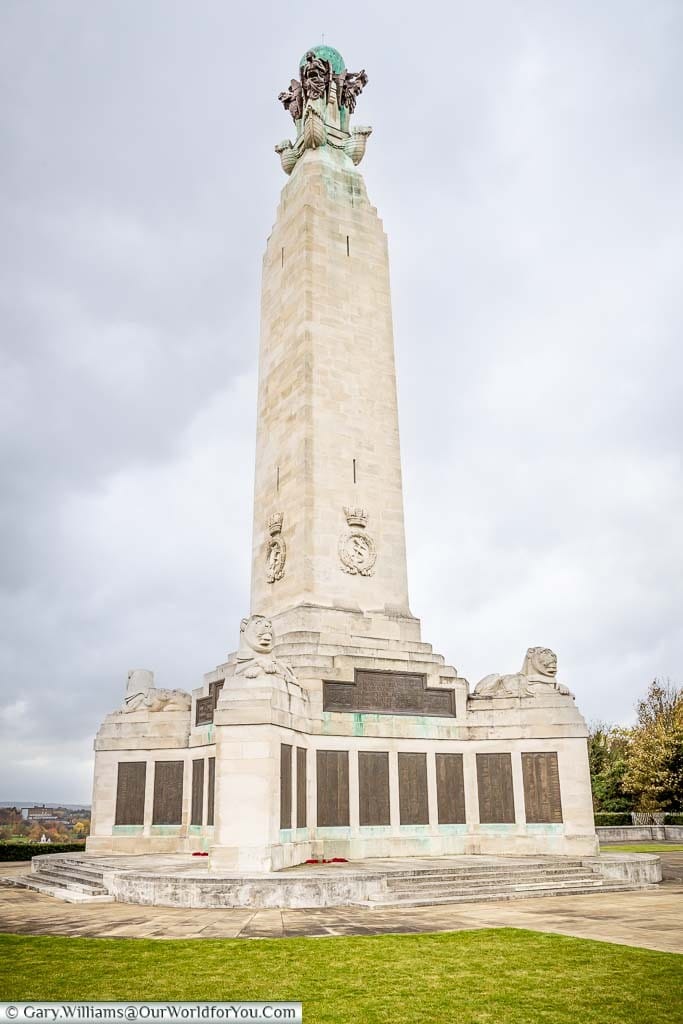
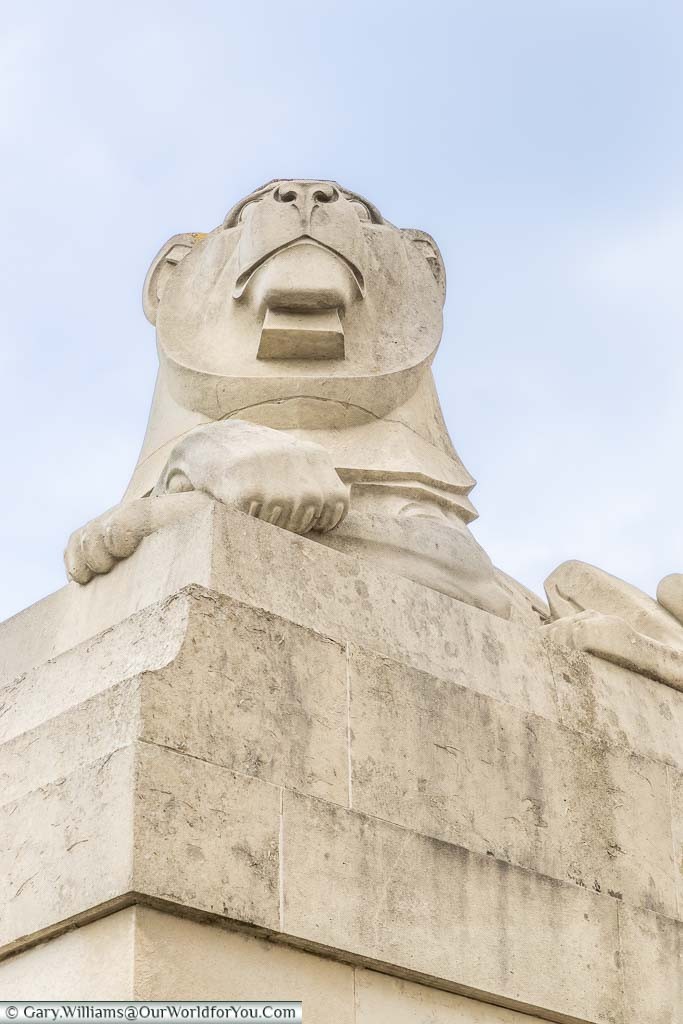
Chatham’s dominant towering obelisk is identical to the columns at Portsmouth and Plymouth. They were designed to be seen by all shipping vessels passing by the three ports.
Chatham Naval Memorial sits proudly, high above the town in the Great Lines Heritage Park. This incredible and distinctive landmark can be observed from miles around.
If you're visiting Chatham for a couple of days to explore the Historic Dockyard Chatham and the Dickensian town of Rochester, here are a couple of overnight suggestions. The Ship & Trades, in the bustling heart of Chatham Marina, offering comfortable rooms with harbourside views. Or The Royal Victoria & Bull Hotel, located within the heart of historic Rochester. Easy walking distance to the Castle, Cathedral, the River Medway and a great selection of restaurants.
What to see and do near Chatham
While you’re visiting Chatham Naval Memorial, take a peek at which other places you can discover in the vicinity. Along with Chatham Historic Dockyard, you can also see two English Heritage sites, Rochester Castle and Upnor Castle.
Ensure you leave a little time to stroll the delightful Dickensian High Street in Rochester, and there’s also a Rochester Cathedral.
Chatham’s Second World War Naval Memorial
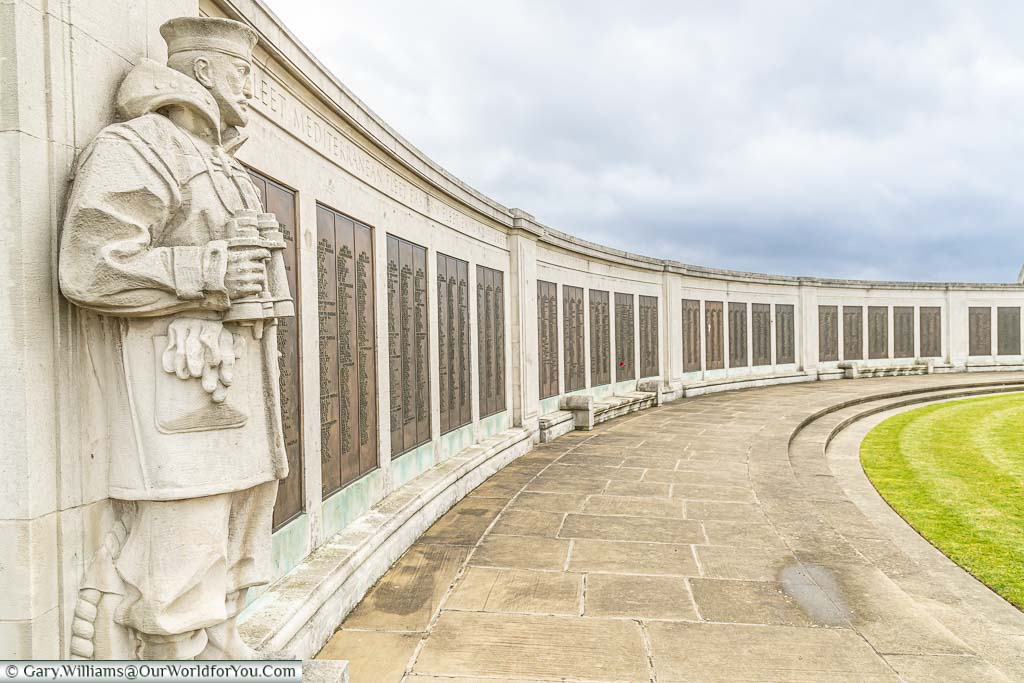
In 1946, the decision was made to extend the existing monument and add the surrounding curved memorial, which envelops the obelisk, to commemorate the Second World War dead.
The arched Portland stone walls were subsequently unveiled by the Duke of Edinburgh on the 15th October 1952.
Every soul is significant – Lest we Forget
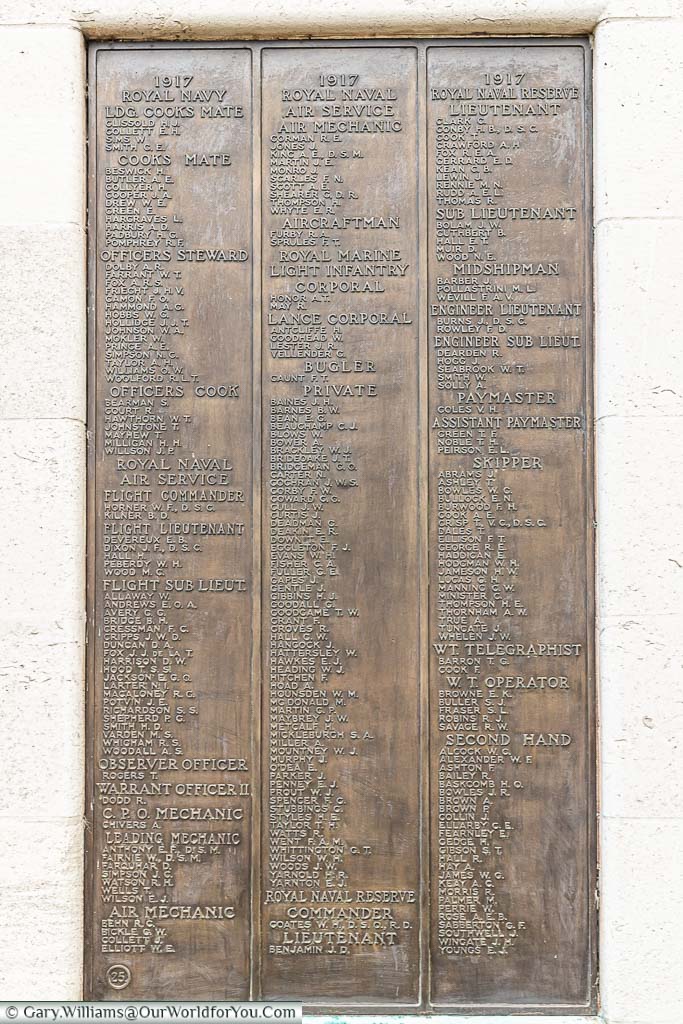
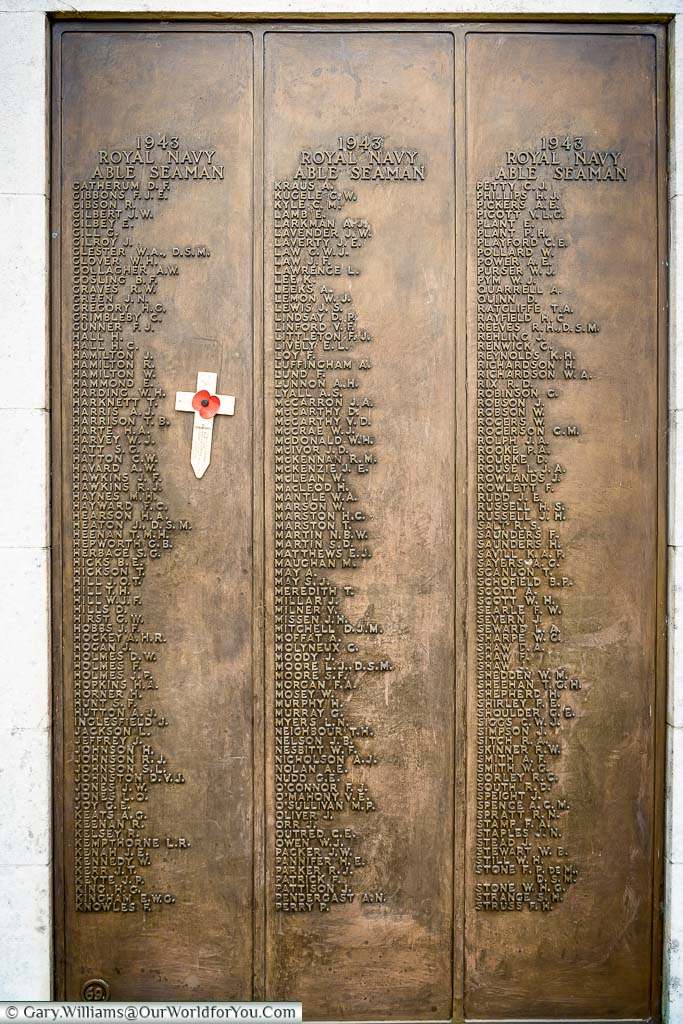
The names of the departed are arranged according to the year of death, the vessel that they served upon, then by service, rank and surname.
There are just so many names; you want to read them all, give every single one of them the time and respect they deserve for allowing us the freedom we have today.
Last Orders
If you would like to take a glimpse of Chatham Naval Memorial on the ‘Silver Screen’, catch the movie Last Orders. The 2001 film has a star-studded cast of Sir Michael Caine, Bob Hoskins, Ray Winstone, Sir Tom Courtenay and Helen Mirren.
Setting off on a journey to scatter ashes in Margate, a touching story unfolds on the way to the Kent coast.
The sailors stand guard
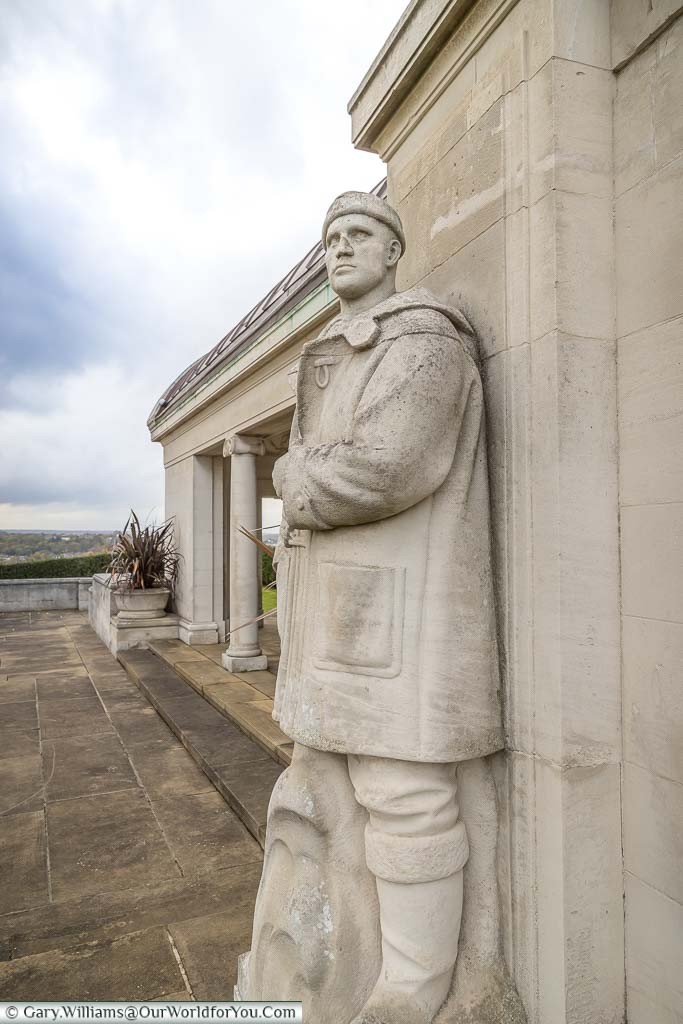
Four beautiful statues of sailors stand, one at each end almost protecting their fellow seafarers.
Row after row, there is just a sea of names, and what I still find incomprehensible is that all these men and women have no known grave. Their final resting place is known only to a higher spirit.
They are not forgotten
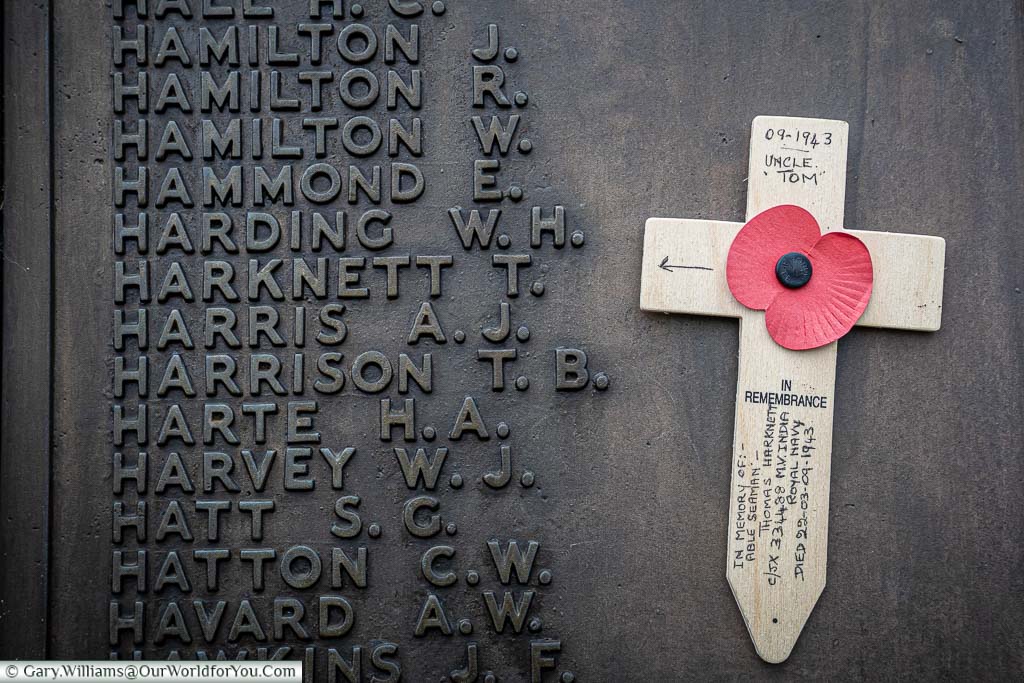
Every person listed is equal to the next; amongst them are over 20 sets of brothers and individuals awarded the Victoria Cross. There are 16 ladies from the Wrens (the Women’s Royal Naval Service) and a young lad of 15 years of age who was a bugler on H.M.S. Cressy.
A few years ago, Gary and I decided that we wanted to remember the war dead on the memorial in our village of Eccles in Kent. So, we set out to uncover a little slice of history for each of the names.
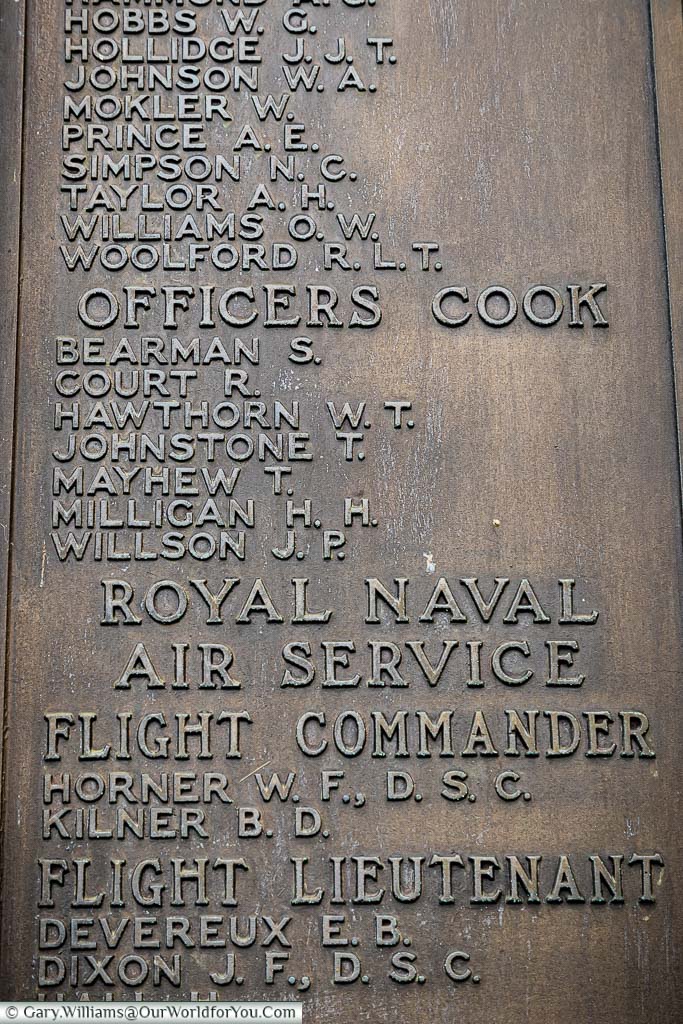
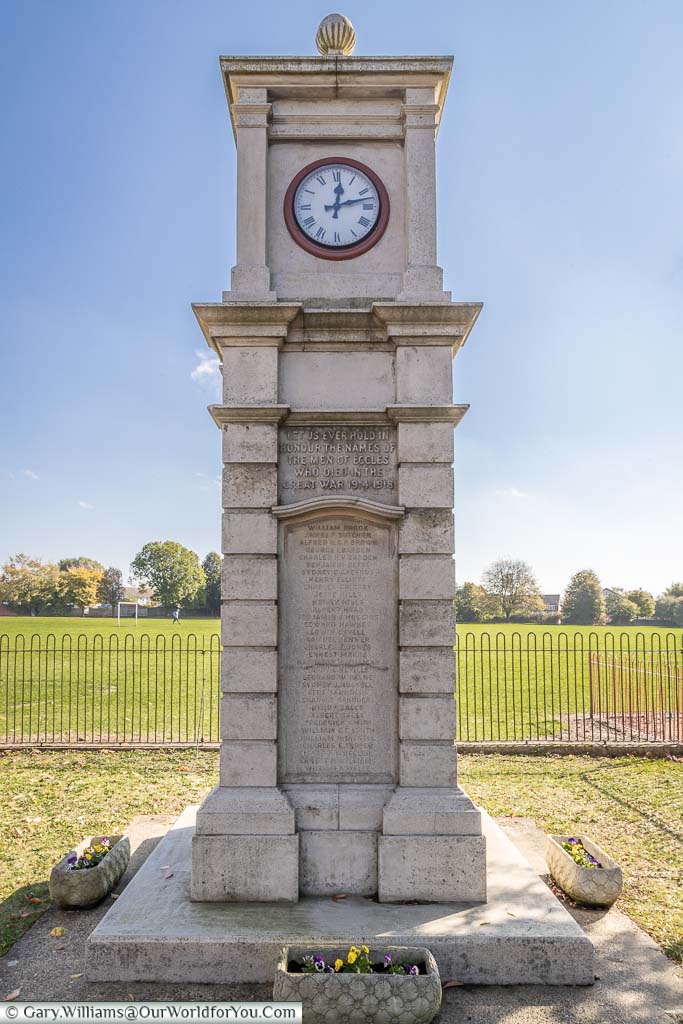
If you're intrigued by Kent's weird and wonderful history, or all unusual stories around the county, then take a peek at "Kent's Strangest Tales".
You won't be able to put it down, you can pick it up for your Kindle or in good old paperback.
Tower Hill Memorial
Loving history as Gary and I do, we have also visited the Tower Hill Memorial in London, just opposite The Tower of London.
This memorial is also seafaring and dedicated to the civilian merchant sailors and fisherman who lost their lives in WWI and WWII. It’s a very touching place to visit, and the incredible number of names appear endless.
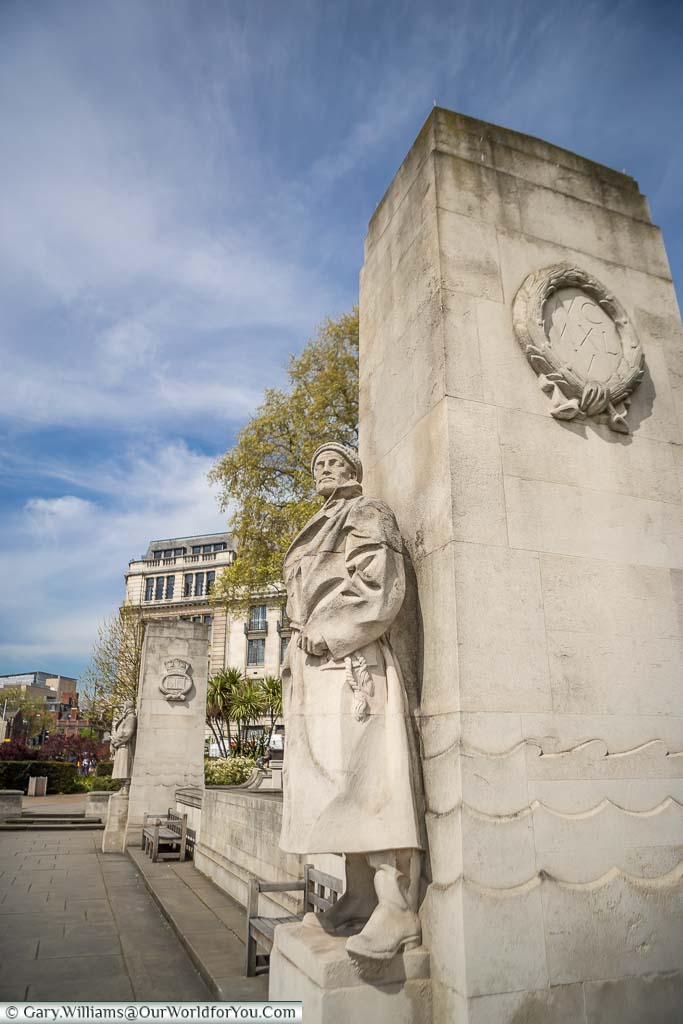
There are a staggering 36,095 inscriptions on the brass panels at the Tower Hill Memorial. Just like the honourable men and women on the Chatham Naval Memorial, these noble young people sacrificed their lives and have no known grave but the sea.
While visiting the Tower Hill Memorial in London why not stay for a few days at the luxury Four Seasons Hotel London at Ten Trinity Square. Located adjacent to the memorial and also the Tower of London, Tower Bridge and St Katharine Docks.
Our Kent road trips
* This post may contain links to affiliated sites where we earn a small commission at no additional charge to you.

